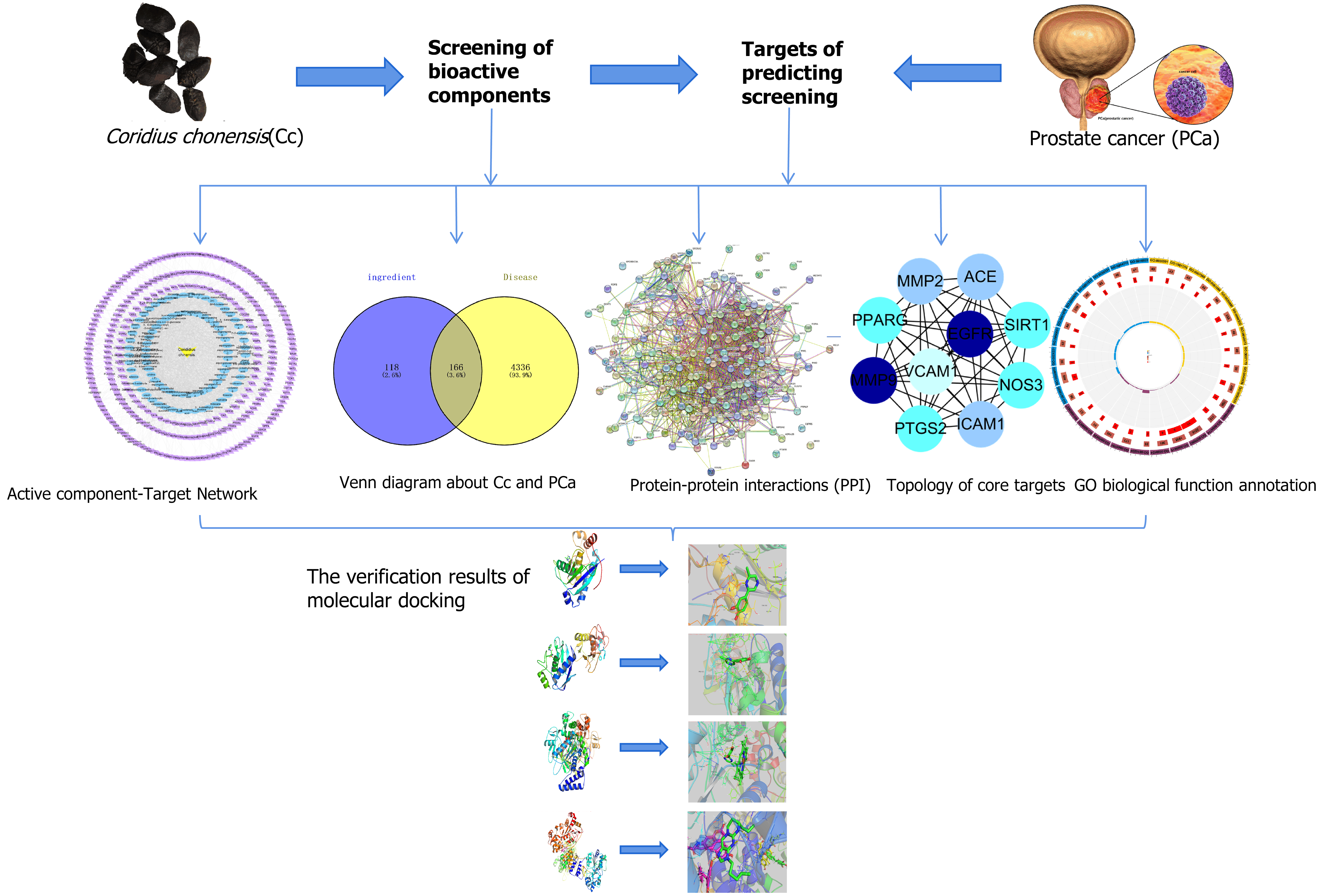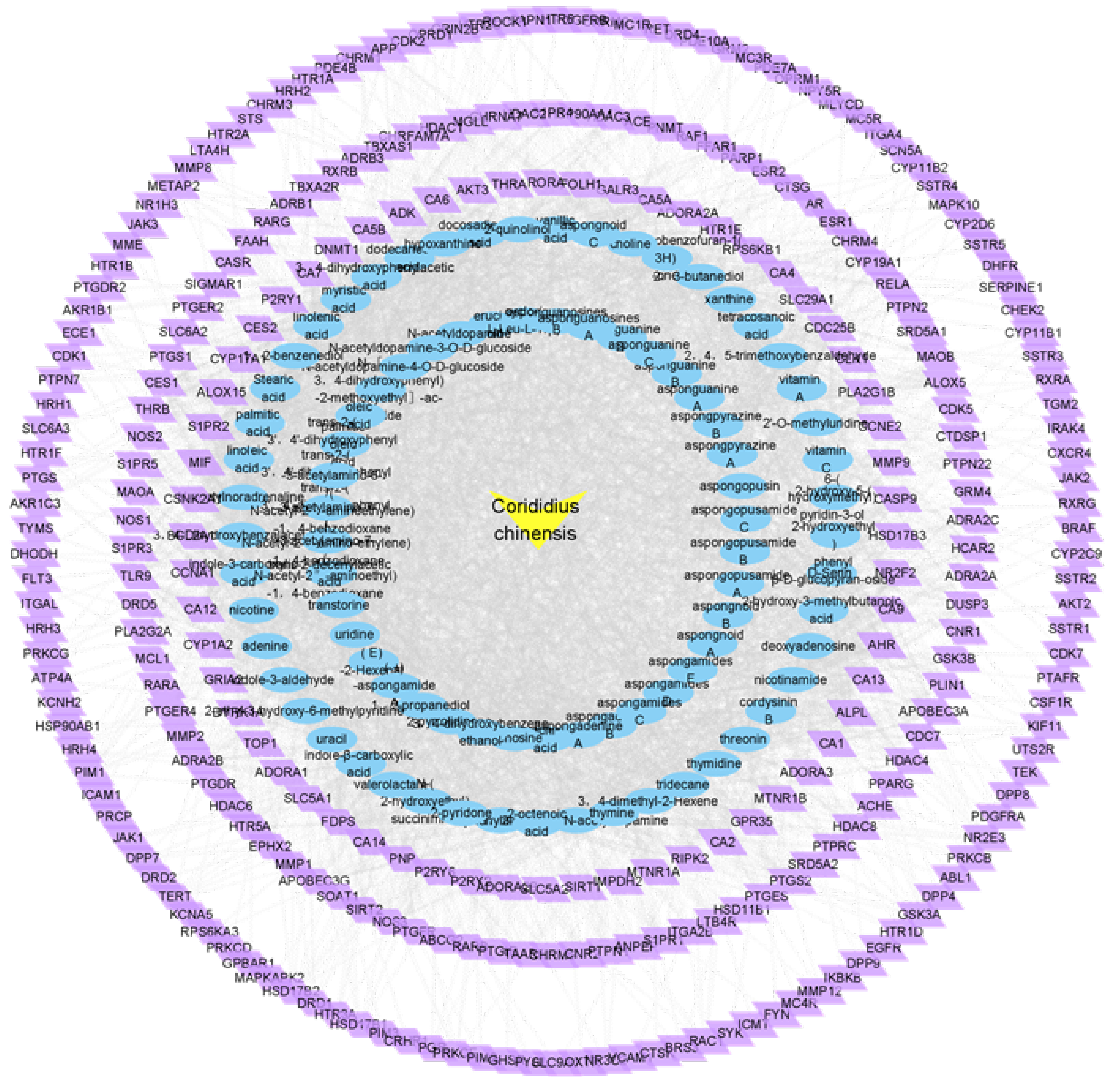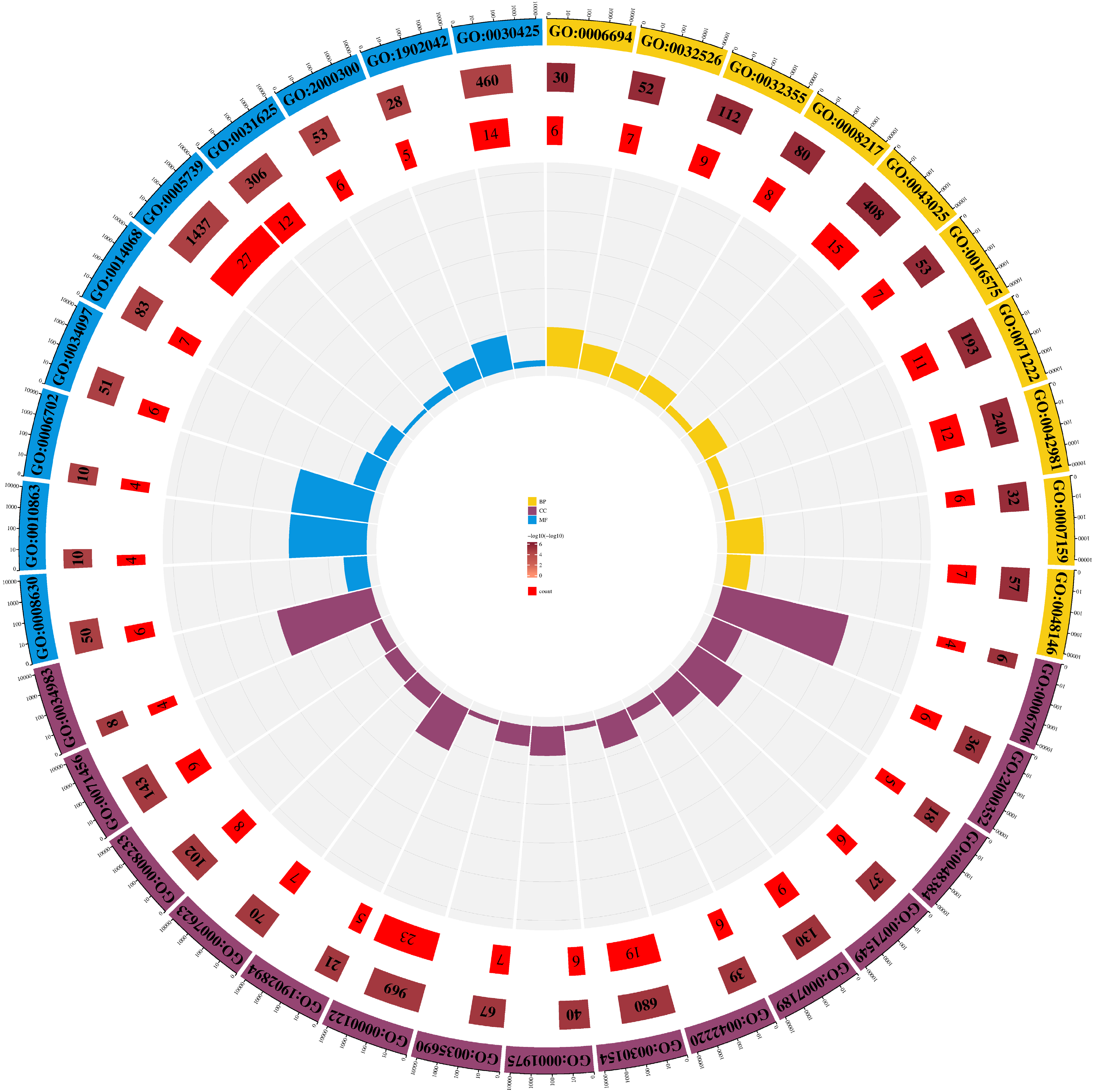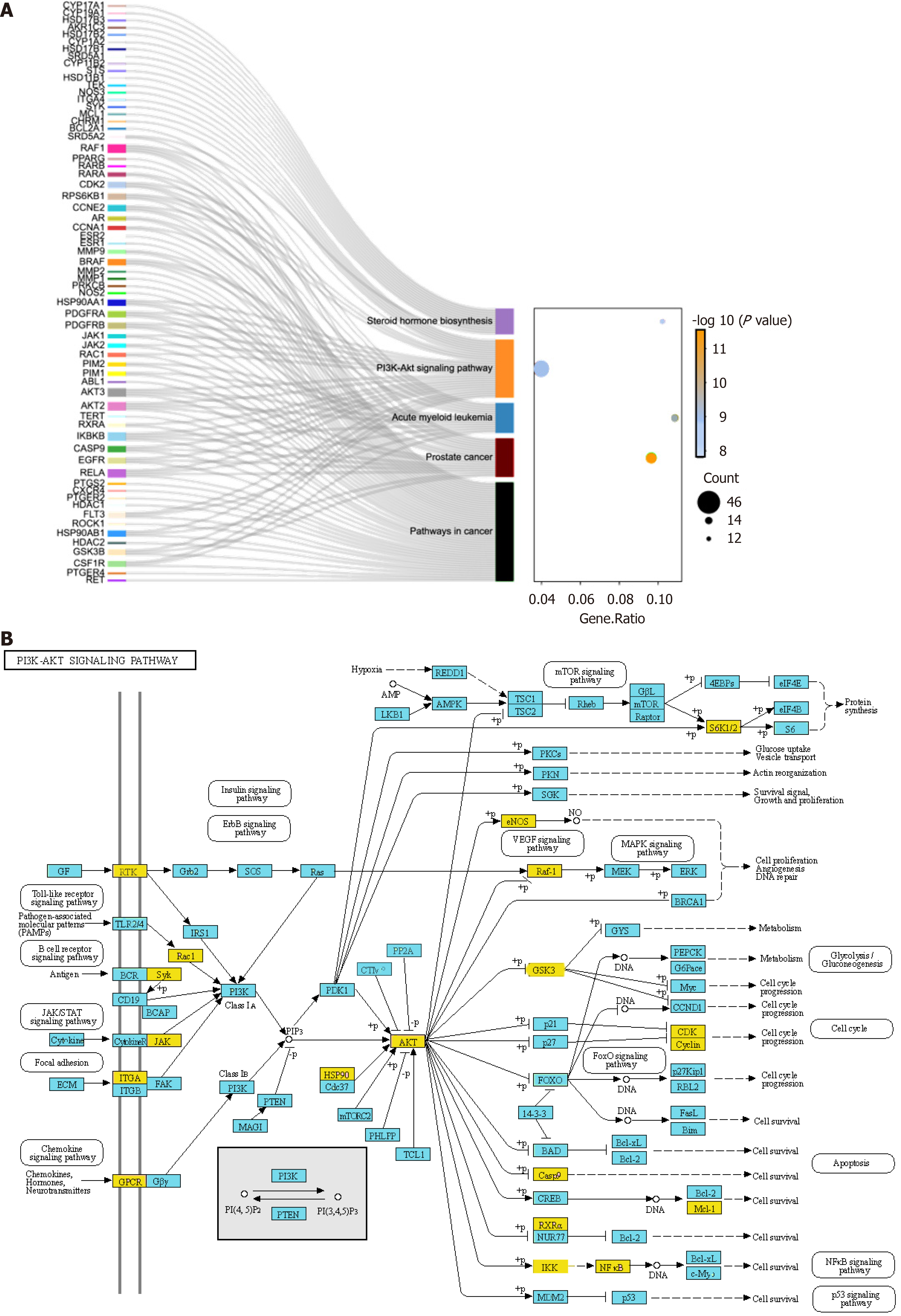Copyright
©The Author(s) 2024.
World J Clin Cases. Sep 26, 2024; 12(27): 6094-6104
Published online Sep 26, 2024. doi: 10.12998/wjcc.v12.i27.6094
Published online Sep 26, 2024. doi: 10.12998/wjcc.v12.i27.6094
Figure 1 A schematic diagram of the study on Coridius chinensis as an anti-prostate cancer treatment.
Network pharmacology was used to filter the compounds of Coridius chinensis for the treatment of prostate cancer; after 63 molecular docking studies, four bioactive compounds were found to bind tightly with candidate molecules.
Figure 2 The component–target network of Coridius chinensis.
The network consists of 89 components and 284 corresponding targets. The yellow triangle represents Coridius chinensis (Cc), the blue circles represent the components of Cc, and the purple quadrangles represent potential targets.
Figure 3 Potential targets and network analyses.
A: Venn diagram of the targets of Coridius chinensis and the targets of prostate cancer; B: Structural diagram of the protein-protein interaction network; C: Diagram of the topology of the core targets. The darker the colour of a node is, the more important the gene it represents.
Figure 4 Gene Ontology pathway enrichment analyses of Coridius chinensis in anti-prostate cancer yellow, purple, and blue represent biological process, cell component, and molecular function, respectively.
Figure 5 Sankey diagram of the top 5 pathways (selected according to the P value) and the main involved pathways.
A: The different coloured rectangles on the left of the figure represent potential target genes; B: Reprinted images of the PI3K-Akt signalling pathway. Gene ratio: Count/set size.
Figure 6 Molecular docking diagrams of prostate cancer-related targets with important compounds of Coridius chinensis.
The optimal binding conformations for A: aspongpyrazine A-MMP2; B: aspongpyrazine A-MMP9; C: aspongpyrazine A-NOS3; D: asponguanosines A-SIRT1.
- Citation: Zhang M, Ma J, Zeng FY, Hou XH. Network pharmacology combined with molecular docking revealed the potential targets of Coridius chinensis in prostate cancer treatment. World J Clin Cases 2024; 12(27): 6094-6104
- URL: https://www.wjgnet.com/2307-8960/full/v12/i27/6094.htm
- DOI: https://dx.doi.org/10.12998/wjcc.v12.i27.6094














